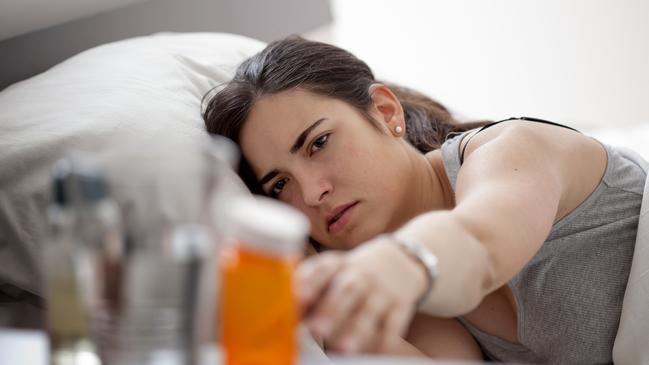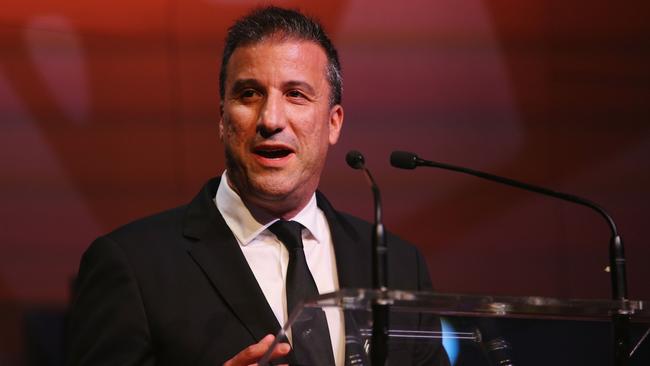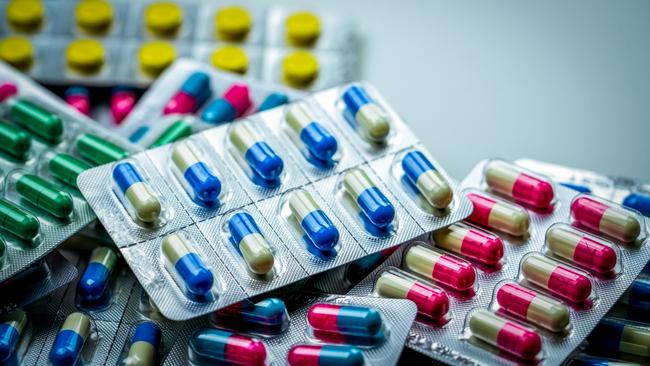Paracetamol, antibiotics among 360 medicines in short supply despite costly agreement
Aussies are paying more for medicines as part of an agreement to guarantee supply – but there are shortages on 365 commonly used medicines. See why.

National
Don't miss out on the headlines from National. Followed categories will be added to My News.
Exclusive: A medicines supply guarantee costing taxpayers and consumers a fortune is failing with critical medicines like paracetamol and antibiotics in short supply.
Australians began paying up to five times more for 900 common drugs from October.
The price hike was meant to guarantee generic medicine companies maintained six month’s supply of critical medicines in Australia to avert shortages.
However, while the price rise took effect on October 1, the drug companies don’t have to ensure six months supply until July next year.
Families with sick children are currently struggling to source basic antibiotics and there is even a shortage of pain and fever reducing medicine paracetamol.
The Therapeutic Goods Administration website lists 365 medicines in short supply including 46 in critical supply.
On the list are antibiotics amoxicillin and cephalexin, heart drug irbesartan, antipsychotic onlanzapine and some of these drugs will not be available until February and March next year.
Compounding the situation are new reports of Chinese students bulk buying paracetamol to send back to China, which is in the grip of a major Covid outbreak after lockdowns ended.
Some pharmacies across Sydney, including Burwood, Hurstville, Macquarie Park, Eastwood and Chatswood, have reportedly had their shelves temporarily stripped of Panadol,
A store manager at Priceline explained that the Panadol shortage could also be due to freight and logistical issues.

Chemist Warehouse chief operating officer Mario Tascone confirmed “there is a shortage of paracetamol” and antibiotics like “amoxicillin has been out of stock for a few months”.
“Panadol has been unavailable for a few months but there are other plenty of other brands,” Mr Tascone said.
“Yes there are holes in our shelves,” he said.
However, Mr Tascone discounted claims that Chinese buyers were the main problem because paracetamol was a scheduled medicine which pharmacies could not sell more than one pack of to any given customer.
The shortage of the drug began well before China’s Covid outbreak prompted panic buying, he said.
The Royal Australian College of General Practitioners (RACGP) has warned of nationwide shortage of antibiotic trimethoprim used to treat urinary tract infections.
It blames this on trials allowing chemists to prescribe the medicine to consumers.
“Where I live and work in Mackay, we have limited supplies of trimethoprim and no amoxicillin nor augmentin,” RACGP President Dr Nicole Higgins said.
Under a strategic agreement negotiated by the previous Morrison Government and the generic medicines industry 900 medicines including all of the top 10 most commonly prescribed medicines on the Pharmaceutical Benefits Scheme (PBS) went up in price on October 1.

These medicines are off patent and the ex-manufacturer price used to be below $4 per month.
Some of the medicines, like blood pressure treatments and heart failure drug candesartan, used to cost just 43 cents per pack per month.
That drug’s ex-manufacturer price rose to $2.50 in October.
The nation’s biggest selling treatment anti-cholesterol drug atorvastatin, which costs $2.95 (ex-manufacturer) jumped to $3.45.
The price of cholesterol lowering Rosuvastatin rose from $1.70 to $2.50.
Anti anxiety treatment sertraline had a price hike from $1.57 to $2.50.
The Generic and Biosimilar Medicines Association said it was “working closely with the TGA to address current supply challenges”.
Australia was a net importer (90 per cent) of medicines, and government price cuts had driven down the price of many generic medicines to an unsustainably low-level, a GBMA spokesperson said.
“This is why we negotiated a five-year agreement with the Commonwealth, that is aimed at better protecting Australians against global supply chain disruptions,” the spokesperson said.

A spokesperson for Health Minister Mark Butler said the medicines price increase was an arrangement inherited from the former government.
“On January 1 the Government is reducing the price of medicines, with the maximum co-pay to drop to $30. This could save someone taking one medication a month $150 every year,” the spokesperson said.
It is worth noting the January 1 price cuts will not affect the 900 medicines that rose in price on October 1.
A spokesperson for the TGA said it was acting to manage the shortage of antibiotics by publishing an Antibiotic Shortage web page advising prescribers of alternative brands or strengths of an antibiotic, and, if these are available, an alternative antibiotic.
It has approved multiple overseas-registered alternative antibiotics for temporary supply, allowed pharmacists to dispense another amoxicillin product to a patient when the one their doctor ordered is unavailable, it is working with wholesalers to ensure fair distribution and prevent stockpiling.
Paracetamol is not a reportable medicine so suppliers do not have to report supply disruptions to the TGA.
“The TGA is aware of increased demand and intermittent supply in recent months particularly for the liquid formulations, with specific varieties (bottle sizes and flavours) of children’s products in short supply,” the agency said.
Originally published as Paracetamol, antibiotics among 360 medicines in short supply despite costly agreement
Read related topics:Cost Of Living




